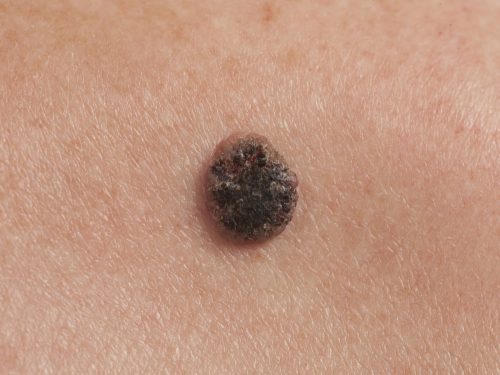Squamous Cell Carcinoma
Squamous cell carcinoma (SCC) is the second most common skin cancer. It is sometimes called cutaneous squamous cell carcinoma (CSCC) to differentiate it from very different kinds of SCCs elsewhere in the body.
It can often appear as a firm pink lump with a rough or crusted surface. It is more common on sun exposed areas such as the head, ears, neck and back of the hands. It can metastasize elsewhere and must be treated early. 1 in every 770 New Zealanders develops SCC each year.

Squamous cell carcinoma SURGERY – FACTS
| Length of surgery | 30-90 minutes |
| Anaesthesia | General or local anaesthetic |
| Hospital stay | Day case |
| Risks/complications of surgery | Frequent: Swelling, bruising, temporary numbness stiffness, discomfort on movement Infrequent: Infection, unsightly scarring, bleeding (haematoma), wound healing problems, permanent numbness, incomplete excision, flap/graft loss |
| Recovery | 5 days facial sutures removed |
| Driving | 1 – 7 days |
| Sleeping position | Sleep on your back with pillow under your knees |
| Follow up | 2 weeks, 6 weeks, 3 months |
| Duration of results | Permanent unless recurrence |
DOWNLOAD FURTHER INFORMATION
Squamous Cell Carcinoma
Any plastic surgery procedure is a very personal choice and understandably there are a number of questions that arise. This information sheet is a general guide for patients considering squamous cell carcinoma treatment under the care of Dr Mackenzie. It should provide the answers to some questions that you may have.
What is cutaneous SCC?
Cutaneous squamous cell carcinoma (cSCC) is a common type of non-melanoma skin cancer. It is derived from cells within the epidermis that make keratin — the horny protein that makes up skin, hair and nails.
What are the risk factors for cSCC?
The main risks factors for developing cSCC are:
- Cumulative sun exposure
- Older age
- Gender-more common in male patients
- Fair skin, blue or green eyes, blond or red hair
- Previous skin cancer
- Actinic keratosis
- Ionizing radiation
- Immunosuppression
- Chronic inflammation
- Scars & chronic wound (Marjolin’s ulcer)
- Chemical-Arsenic exposure, smoking, hydrocarbons
- Family history
Who is more likely to develop cSCC?
The following groups of people are at greater risk of developing the SCC:
- Immunosuppressed patients
- Organ transplant patients
- People who have had significant cumulative ultraviolet light exposure
- People susceptible to sunburn
- People with UV-sensitive skin conditions such as albinism and xeroderma pigmentosum